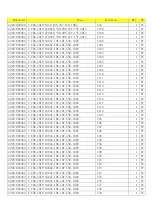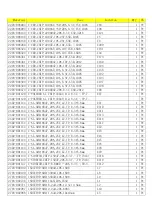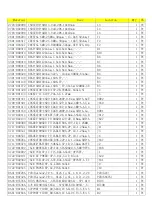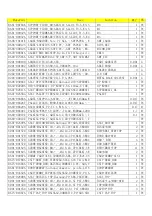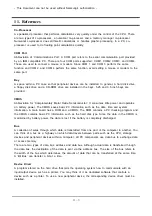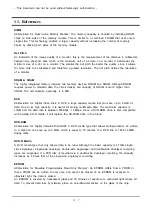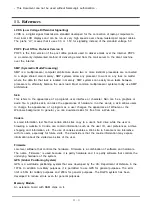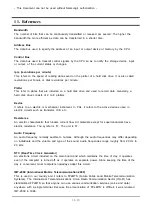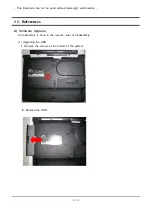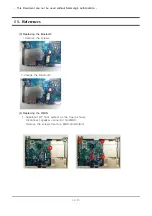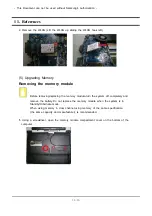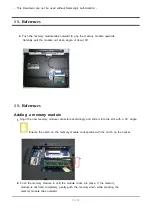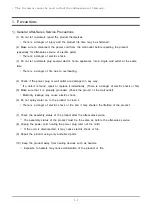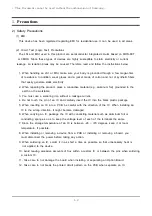
11-7
11. References
DIMM
Abbreviation for ‘Dual In-line Memory Module’. The memory capacity is doubled by installing DRAM
chips on both sides of the memory module. This is similar to a combined 2 SIMM that uses only a
single side. This technology enables a larger capacity without increasing the number of memory
banks by utilizing both sides of the memory module.
Dot Pitch
An indication of the image quality of a monitor, this is the measurement of the distance in millimeters
between two phosphor dots, which is the minimum unit of a screen on a monitor. It determines the
minimum size of a dot on a monitor. The smaller the dot pitch the better the quality, since it allows
for more dots to be displayed and therefore a greater resolution. The dot pitch defines the resolution
of a monitor.
DRAM & SRAM
The highly integrated memory includes two memory devices: DRAM and SRAM. Although DRAM
requires power to maintain data, the circuit density and capacity of DRAM is much higher than
SRAM. The unit capacity, generally, is in MB.
DVD
Abbreviation for ‘Digital Video Disk’. A DVD a large capacity media that can save up to 4.7GB of
data. Due to its high capacity, it is useful for storing multimedia data. The maximum capacity is
17GB and the data rate is between 600Kbps
∼
1.3Mbps. Since a DVD-ROM drive is also compatible
with existing CD-R media, it will replace the CD-ROM drive in the future.
DVD-RAM
Abbreviation for ‘Digital Versatile Disc-RAM’. A DVD media type that allows multiple data to be written
to a disk and can save up to 2.6GB, which is equal to 70 minutes of a DVD title or 1800 1.44MB
floppy disks.
DVD-R Media
A DVD media type that only allows data to be read. Although the basic capacity is 4.7GB, single-
side single-layer, single-side dual-layer, double-side single-layer and double-side dual-layer recording
types are supported. If a DVD disc is recorded via a double-side dual-layer recording, the capacity
increases by 4 times that of the single-side single-layer recording.
EPROM
Abbreviation for ‘Erasable Programmable Read Only Memory’. An EPROM differs from a PROM in
that a PROM can be written to only once and cannot be erased. IF an EPROM is exposed to
ultraviolet light, the data is erased.
An EPROM is covered by transparent glass and 30 minutes of exposure to ultraviolet light erases all
data. To prevent data loss by mistake, place an anti-ultraviolet sticker on the glass of the chip.
- This Document can not be used without Samsung's authorization -
Summary of Contents for Hainan-C
Page 61: ...5 24 This Document can not be used without Samsung s authorization 5 Troubleshooting ...
Page 62: ...5 25 This Document can not be used without Samsung s authorization 5 Troubleshooting ...
Page 107: ...11 2 11 References This Document can not be used without Samsung s authorization ...
Page 123: ...11 18 11 References This Document can not be used without Samsung s authorization ...


